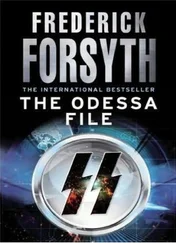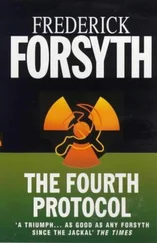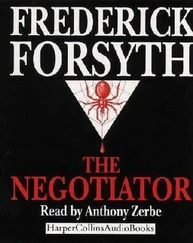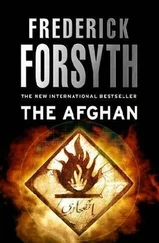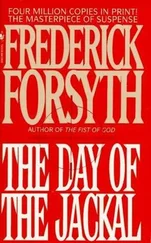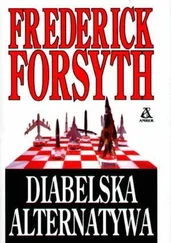And he had an effect. Several killings took place at the hands of ultras converted by listening to his lectures calling for murder and destruction. And he formed a partnership with a brilliant Saudi bombmaker named Ibrahim al-Asiri. It was Awlaki who persuaded the young Nigerian Abdulmutallab to agree to die by suicide bomb in an airliner over Detroit, and Asiri who built the undetectable bomb into his undershorts. Only a malfunction saved the plane — but not the Nigerian’s genitalia.
As Awlaki’s sermons became more and more effective on YouTube — he was regularly downloaded 150,000 times — Asiri became more and more skilled with his bombs. Eventually, both went on the kill list in April 2010. By then, he had been joined by his secretive and self-effacing disciple from Pakistan.
Two attempts were made to track him and destroy him: one involved the Yemeni army, who let him slip away when his village was surrounded; the other was when a U.S. missile from a drone destroyed the house he was supposed to be in. But he had left.
Justice finally caught up with him on a lonely track in North Yemen on 30 September 2011. He had been staying at the village of Khashef and was identified by a junior acolyte, who took dollars to make the “squeal.” Within hours, a Predator, launched out of a secret pad in the Saudi desert across the border, was circling over him.
In Nevada, eyes watched the three parked Toyota Land Cruisers — the al-Qaeda vehicle of choice — in the village square, but permission to launch was denied because of the women and children nearby. At dawn on the thirtieth, he was seen to climb into the lead vehicle. The cameras were so good that when he looked up, his face filled the entire plasma screen at Creech Air Force Base.
Two Land Cruisers set off, but the third seemed in trouble. Its hood was up, and someone seemed to be working on the engine. Unbeknownst to the watchers, there were three more waiting to board that vehicle, and the U.S. would have liked them all.
One was Asiri the bombmaker himself. Another was Fahd al-Quso, deputy head under Awlaki at AQAP. He had been one of those behind the killing of seventeen U.S. sailors on the destroyer Cole in Aden harbor in 2000. He would later die in another drone strike in May 2012.
The third was an unknown to the Americans. He never looked up, his head was shrouded and masked against the dust, and no one saw that he had amber eyes.
The two leading SUVs set off down a dusty track into Jawf Province, but they kept apart so the watchers in Nevada did not know which to strike. Then they stopped for breakfast and parked side by side. There were eight figures grouped around the vehicles. Two drivers and four bodyguards, and the other two were American citizens: Awlaki himself and Samir Khan, editor of the English-language online Jihadi magazine Inspire .
The NCO at Creech told senior authority what he had in the target frame. From Washington, a voice murmured: “Take the shot.” It was a J-SOC major, a soccer mom, about to take her kids to evening practice.
The trigger was pressed in Nevada. Over North Yemen, 60,000 feet high in a beautiful sunrise, two Hellfire missiles detached themselves from the Predator, sniffed the nose-cone signal like hunting dogs and tilted down to the desert. Twelve seconds later, both Land Cruisers and eight men vaporized.
Within six months, J-SOC had ample evidence that Asiri, still only thirty, had continued making bombs, and they were getting more and more sophisticated. He began to experiment with the implantation of explosives inside the human body, where no scanner could spot them.
He sent his kid brother to assassinate the Saudi head of counterterrorism, Prince Muhammad bin Nayef. The youth claimed he had renounced terrorism, wished to come home, possessed much information and sought an interview. The prince agreed to see him.
As he entered the room, the young Asiri simply blew up. The prince was lucky; he was blown backward through the door he had come in by, taking only some cuts and bruises.
The young Asiri had a small but powerful bomb up his anus. The detonator was a mobile-telephone-based device across the border. It was his own brother who designed and triggered it.
And the dead Awlaki had a successor. A man known only as the Preacher began to launch sermons into cyberspace. Just as powerful, just as hate filled, just as dangerous. Yemen’s ineffectual president fell to the Arab Spring. A new man took over, younger, more vigorous, prepared to cooperate with the U.S. in exchange for substantial developmental aid.
The drone coverage of Yemen increased. U.S.-paid agents proliferated. The army was launched against AQAP leaders. Quso was wiped out. But still it was presumed the Preacher, whoever he was, remained in Yemen. Now, thanks to a boy in a loft in Centerville, the Tracker knew better.
* * *
As Tracker closed the file on the life of Awlaki, a report came through from those Gray Fox had simply called the drone boys. For this operation, J-SOC was not using the CIA drone facility out of Nevada but its own dedicated unit out of Pope Air Force Base near Fayetteville, North Carolina.
The report was succinct and to the point. Trucks had been seen visiting the target warehouse/shed in Kismayo. Some came, went undercover and left. They arrived loaded but left empty. Two were open-topped over the cargo area. What they seemed to be carrying was a cargo of fruit and vegetables. Endit.
Tracker turned and stared at the portrait of the Preacher on his wall. What the hell do you want with fruit and vegetables? he mused.
He stretched, rose and walked out into the summer warmth. Ignoring the smiles of those in the parking lot, he hauled his Fireblade off its stand, pulled on his helmet with the visor down and cruised out through the gate. When he hit the highway, he turned south for D.C., then off the main road for Centerville.
“I want you to check something for me,” he told Ariel, as he crouched in the semidarkness of the attic. “Someone is buying fruit and vegetables in Kismayo. Can you find out where it is coming from and where it is going to?”
There were others at computer consoles he could have approached, but in a vast arms-industrial-espionage complex teeming with rivals and loose mouths Ariel had two unpurchasable advantages: He reported to only one man and he never talked to anybody. Ariel’s fingers flickered away. The map of lower Somalia swam into view.
“It’s not all desert,” he said. “There is a richly forested and planted area along both banks of the Lower Juba Valley. Look, you can see the farms.”
Tracker studied the patchwork quilt of orchards and plantations, a splash of green against the dull ocher desert. The country’s only fertile zone, the food bowl of the south. If those cargoes were harvested in the plantations he was staring at and trucked to Kismayo, where thence? Local markets or export?
“Go to Kismayo port zone.”
Like everything else, the port was pretty shattered. Once it had thrived, but the quay was broken in a dozen places, the old derricks tilted and damaged beyond use. It could be that a freighter came in occasionally. Not to discharge. What could al-Shabaab’s bankrupt ministate import and pay for? But to pick something up? Fruit and vegetables? Maybe. But destination where? And for what?
“Search the commercial world, Ariel. See if any company trades with Kismayo. Anyone buying fruit and vegetables raised in the Lower Juba Valley. If so, who are they? Maybe they own the warehouse.”
He left him to it and returned to TOSA.
* * *
In the extreme northern suburbs of Tel Aviv, off the road to Herzliya, in a quiet street just down from a food market, is a large, nondescript office block that its inhabitants simply call the Office. It is the headquarters of Mossad. Two days after Tracker’s meeting with Simon Jordan at the Mandarin Oriental, three men in short-sleeved, open-necked shirts met in the director’s office. That room had seen quite a few momentous conferences.
Читать дальше

